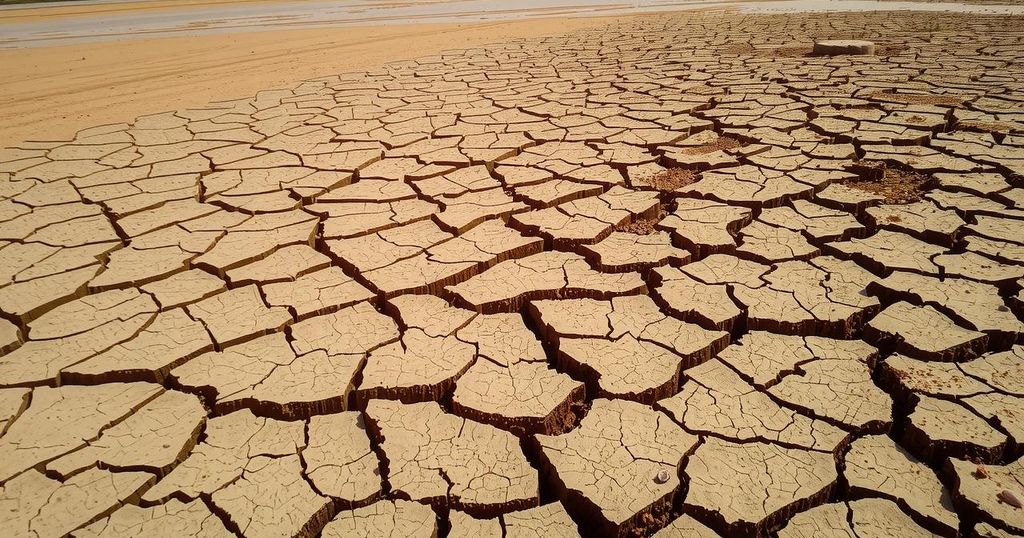A historic drought has caused unprecedented low water levels on the Paraguay River, disrupting regional commerce and impacting thousands. The ongoing environmental crisis raises concerns about future drought patterns and highlights the connection between climate change and water management issues worldwide.
A significant drought in the Amazon rainforest has triggered record low water levels on the Paraguay River, which serves as a crucial economic artery for the region. According to Paraguay’s Department of Meteorology and Hydrology, the water levels have sunk by 89 centimeters (35 inches) below the benchmark at the port of Asunción, marking the lowest point in 120 years. This severe change disrupts commerce and raises concerns for the global community.
The previous low record was set just three years ago in October 2021, indicating a troubling trend of increasing frequency and intensity of droughts that threaten the waterways of the region. Paraguay, being landlocked, heavily depends on the river, as approximately 80% of its international trade relies on it. The fishing community has been severely affected, with reports indicating that 1,600 fishermen have lost their livelihood due to shrinking waters, resulting in stranded boats and halted activities.
The Paraguay-Paraná waterway, which spans approximately 3,400 kilometers (about 2,110 miles), plays a vital role in the transportation of essential agricultural products, including grain, corn, and soybeans. Recent disruptions in the river have extended beyond Paraguay, causing significant delays and halting over half of the shipping capacity, which impacts neighboring countries, including Brazil and Bolivia. This predicament has led to unexpected economic ramifications, with Paraguay facing potential energy supply cuts as it relies on the river for electricity generation.
With no rainfall predicted in the immediate future, officials anticipate considerable economic losses that could reach into the hundreds of millions. Concerns regarding the sustainability of the river as a reliable resource have been voiced, with industry leaders questioning whether this reflects a new normal of conditions. The ongoing drying phenomenon of rivers globally underscores the effects of climate change, population growth, and inefficient practices in water governance.
As the situation escalates, experts emphasize the increasing intensity of drought conditions, noting that communities worldwide are now experiencing prolonged periods of water scarcity. The extreme drought currently afflicting the Amazon has exacerbated environmental concerns, including the spiraling wildfires impacting the northeastern border of Paraguay and neighboring Bolivia, where a national emergency has been declared.
The severe drought affecting the Paraguay River has reached historic lows, significantly disrupting regional commerce, particularly in Paraguay, a key player in agricultural exports. The crisis underscores a broader trend of climate-induced water scarcity, highlighting the interconnectedness of environmental changes and economic stability. Experts express concern over the sustainability of water resources amid intensifying drought patterns, forecasting a troubling outlook for affected communities.
Original Source: bgdailynews.com




